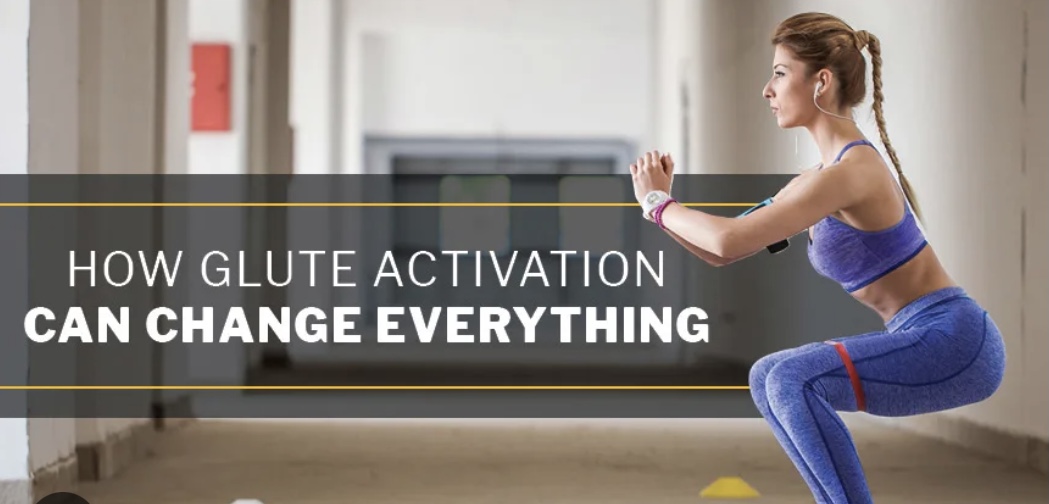October 31, 2025

Introduction: The Missing Link Behind Stubborn Glutes
If you’ve spent hours doing squats, bridges, and clamshells — yet your glutes still don’t seem to “fire” — you’re not alone. Many Toronto Chiropractic patients I see have already tried physiotherapy, massage, and personal training without success.
Then, after a precise chiropractic adjustment to their low back, something remarkable happens: their glutes finally activate. Movements feel smoother, stronger, and more stable — all within minutes.
So why does this happen? The key lies in the neural pathways between your spinal joints and gluteal muscles.
The Problem: Why Glute Activation Fails Despite Exercise
The gluteus maximus, medius, and minimus are powerful stabilizers, but they depend on efficient communication from the nervous system to activate properly.
The superior and inferior gluteal nerves, which control your glutes, arise from the L4, L5, and S1 spinal segments. When these spinal joints become restricted, irritated, or misaligned, they can distort the sensory input traveling through these nerve pathways.
This leads to arthrogenic muscle inhibition (AMI) — a reflex that reduces muscle activation when joint motion or feedback is compromised. Research in the Journal of Manipulative and Physiological Therapeutics shows that spinal dysfunction can alter neuromuscular control (JMPT, 2010).
So when your glutes don’t respond to exercise, the real problem often lies in the spine, not the muscle.
Expert Insight: What Happens During a Chiropractic Adjustment
A chiropractic adjustment restores motion to the restricted joints in your lower spine — particularly L4–S1, the region linked to gluteal nerve roots.
When motion is restored, mechanoreceptors in the spinal joints send clear, accurate information to your brain. This renewed feedback improves neural control, allowing your brain to “reconnect” with the glute muscles.
In neuroscience terms, adjustments enhance corticospinal excitability — your brain’s ability to activate muscles (Haavik & Murphy, Brain Sci, 2012).
That’s why patients often describe the sensation as:
“It’s like my glutes finally woke up.”
This isn’t magic — it’s neurophysiology in action.
Why Other Treatments Often Miss the Root Cause
Many patients arrive at my Toronto Chiropractic Clinic after months of glute strengthening programs, resistance band work, or manual therapy. These treatments focus on the muscle, not the signal source.
If your spinal joints aren’t moving properly, the nerves supplying your glutes can’t communicate efficiently — no matter how much you train.
Until you correct the dysfunction in the lumbar and sacral spine, glute activation remains incomplete.
That’s why a NeuroStructural corrective approach — targeting the root cause in the low back — often leads to the long-awaited breakthrough.
The NeuroStructural Corrective Process: How We Reactivate the System
At Dr. Mateusz Krekora Chiropractic Clinic, we use a NeuroStructural Corrective Process to restore healthy communication between your spine, nerves, and muscles.
Local Recovery Tips: Keep the Connection Alive
These daily habits keep your glute–spine connection alive and strong.
Conclusion: When the Spine Fires, the Glutes Follow
If your glutes never seem to activate no matter how hard you train, the missing link might be your low back. Chiropractic adjustments restore spinal motion, reset neural pathways, and finally allow your glutes to perform the way they’re designed to.
At Dr. Mateusz Krekora Chiropractic Clinic, we help patients restore this critical brain–body connection so they can move better, feel stronger, and live pain-free.
👉 Book Your Free 20-Minute Case Review
Let’s get your glutes — and your nervous system — firing again.
FAQ: Chiropractic Adjustments & Glute Activation
Can a chiropractic adjustment activate my glutes?
Yes. A low back adjustment can restore proper motion in the spinal joints that influence the nerves controlling your glutes (L4–S1). When these nerves communicate clearly again, your brain can fully “turn on” the glute muscles.
Why didn’t exercise or physiotherapy fix my glutes?
Exercises strengthen muscles, but they can’t fix disrupted nerve communication caused by restricted spinal joints. Chiropractic care addresses the neural control system — the missing link behind stubborn glutes.
Which nerves control the glute muscles?
Your glutes are controlled by the superior and inferior gluteal nerves, which branch from the L4, L5, and S1 spinal levels. Any dysfunction at these levels can reduce glute activation.
How soon do patients notice improvement?
Many patients report improved glute engagement immediately after an adjustment, though sustained results come with follow-up care and movement retraining.
Is this approach safe?
Yes — when performed by a licensed chiropractor, spinal adjustments are safe and evidence-informed. The goal is to restore motion and nerve communication, not forceful manipulation.
Disclaimer:
This article is for informational purposes only and should not be taken as medical advice. Please consult a licensed chiropractor before beginning any treatment.
